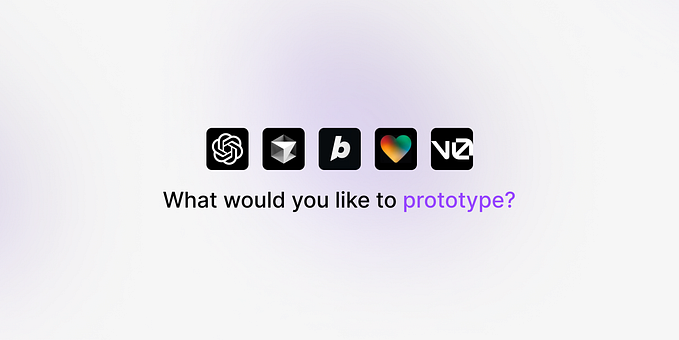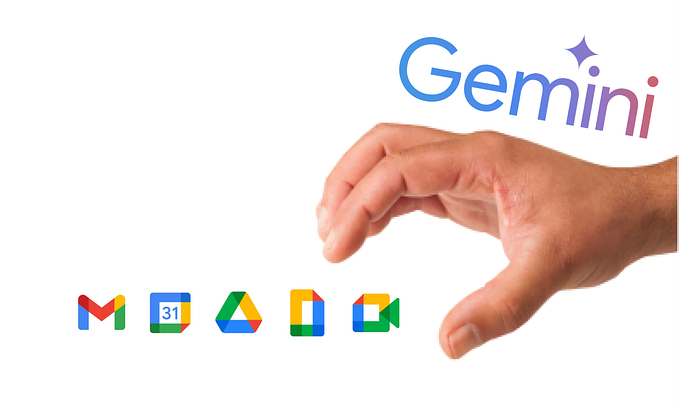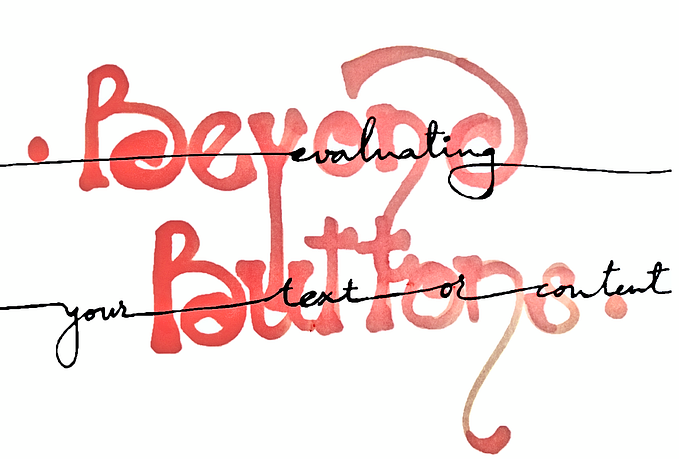Establishing a UX practice in an engineering-led environment
As I begin this article, I am thinking… The feeling of starting a blank canvas is really good, even if the canvas is not a design canvas. I just love to design things, I love new starts, despite that blank-empty-panic feeling, I just enjoy it!
And that is why I felt super excited the moment I realised that I would need to build, structure and evolve the UX Design practice in an engineering-led organisation. Note that this organisation was not a tech company from its inception and was undergoing an agile transformation. The journey, my friends, is proving to be quite a ride!
This moment coincided with my return to the sunny Porto, after spending almost 2 years in London. Those 2 years for me felt like 5, but I will leave that story for another time. Since I was back home, I truly wanted to work in a Portuguese company, speak Portuguese and share what I had learned working with top designers at top organisations in London. This was and still is, a great opportunity for me to make an impact, to contribute and make a change.
Where to start then?
Now I’m thinking… I should have written this before!
Where did I start? How did I know what to do? Simple and straight answer, I didn’t. Period. I had no freaking idea, I lacked role models I guess, I lacked a mentor, I lacked direction. So I drew from my experience and tried to, at least, not make the same mistakes I have seen other design leaders and managers make. The main one being the lack of structure, process and leadership.
Faced with this big challenge my first thought was “I am not an experienced manager, I’ve no idea where to start, so I’ll tackle this as a design challenge”. And that’s what happened. So, similarly to a design challenge, my first step was:
Step #1 Empathise with the organisation
As we were going through an agile transformation, a new organisation structure, new teams, new roles, new processes were being implemented.
One thing that made me happy and proud at the time, was that the UX discipline was genuinely being considered in the midst of this transformation. We had a seat at the table, we were part of the leadership team and that is still something not very common in Portugal. I mean, unfortunately, leadership in design is not something that we see often in Portuguese companies, especially being represented by a woman. I felt deeply privileged of having the opportunity of representing design, designers and our interests.
One extra challenge was that this organisation had a different number of products, each with its cross-functional team, ways of working and different context.
I moved on and started speaking with all key players in this transformation to understand the motivation behind it, what was not working in the past and why the company had decided to start this change. I also tried to understand what was working in the past and how we could maintain it. I did this from an organisational and business point of view and with the following goals in mind:
- Understand motivations: individual and as a whole
- Understand from where we were coming from as an organisation
- Understand where we were trying to go, what we were trying to achieve
- Build relationships with key stakeholders
These were the key roles I interviewed: C-Level, Managers, Product Owners, Technical Leads, Human Resources and Senior Developers. Occasionally, I also had some conversations with some other parts of the business like R&D, Procurement, Marketing, to understand the ecosystem and their views on what was happening in the tech side of the company.
I didn’t figure out all the answers, it was really hard to navigate people because they were defensive and also because some of them didn’t know the answers as well and I couldn’t blame them. Communication was not crystal clear, it still isn’t. Alignment was also hard to find.
Step #2 Frame the challenge
When I was connecting with these people I was also trying to read between lines and understand their views on design and UX. However, I was focused on the big picture at the time. Only after that, was I ready to drill down a bit further. So I put together a couple of questions and began the second round of interviews.
Understand the past:
- Where did UX come from?
- How was UX shaped in the past?
- Who was the UX team?
- How was the UX team functioning?
- How were designers collaborating with other disciplines?
- What was expected from designers?
All these questions led me to the main one: How was design perceived in the organisation? The answers were pretty aligned: “Design is a discipline represented by designers whose job is to make that make things pretty, i.e. putting some lipstick on the pig.”

It was then that I realised that the whole organisational structure was engineering-led, inspired by Spotify.
At this point I was digging deep with my team as well, I was collecting a lot of information from the 3 designers who were already working there when I arrived. To achieve this, I tried to form relationships with them through regular 1:1s and team activities. Honestly, until now, that was one of the hardest things in my journey.
I conducted regular 1:1s to get to know them and for them to get to know me, I truly wanted to create a relationship of trust. I also made use of that moment to ask them 3 things:
- What is working?
- What is not working?
- If you were in my position, what would you focus on?
As a team activity, I felt that a retrospective could be a useful activity to discuss the answers to the questions above as a team. It proved to be super useful because helped me measure the temperature, to get a feel of the team and also to figure out where we wanted to be. We applied the affinity diagram technique to cluster patterns and identify improvement areas. With all those findings I ended up framing the main challenge as:
How might we build a design discipline in an engineering-led organisation?

Step#3 Research and ideate solutions
The challenge was framed, the main areas of improvement were defined, the organisation needs were collected, and the designers’ needs were there as well. I had so much to do, so many challenges ahead, exciting times!
It was the middle of the summer when I ran the retrospective with the UX team. I spent the week after documenting it on Trello and the following weeks trying to get my head around all those problems. On the Trello board, we had all areas of improvement that we should be focusing on. Some of them already had some actions defined, but for many others, solutions were still missing.
I also struggled to prioritise all the things we needed to tackle. The team helped me with some, but I needed to align the organisation and ecosystem needs as well. I also lacked a direction, but I decided to face it as an opportunity. An opportunity to define a discipline from scratch.
So you may be asking, how did you know where to start then? I used an impact/effort matrix that I learned from the design sprint process and from there I decided which areas needed to be tackled first in order to make a bigger impact with less effort.
As I was going through this process I also came to the conclusion that I needed to set a long term goal, a north star to guide us. I settled on:
Amplify the value of design in the organisation.
With this in mind, I started to research about design teams and how other design leaders tackled challenges of this nature. This kind of information was not easy to find, and it still isn’t. I also felt it was always explored on the surface and lacked application details.
So I decided to go more offline and started reading a book that my previous boss, Head of UX at Net-a-Porter, offered me on Christmas 2018: Radical Candor: how to be a great boss without losing your humanity, by Kim Scott. That Christmas she offered a copy to each one of us in the team with a personal Christmas card 💜, I didn’t understand the message, I was not there yet. I think that only a couple of months after I realised that she saw something in us that I didn’t at the time: the future generation of design leaders. When I realised this, my first reaction was WOW.
Cat was really cool, she was not a typical manager, she was different, disruptive! In the beginning, it was hard for me to get used to her style, but once I understood where she was coming from and all the battles she was fighting on our behalf, I started to admire her very much and started looking at her as a role model. To be completely honest, only after I flew back home I realised how lucky I was for having the opportunity to work with her and the Net-a-Porter team.
That was my second time in a 20'ish people design team and I was able to learn how to lead design in an engineering-led environment. From all these learnings, there was one in specific that contributed more to this story I am telling you. At Net-a-Porter, we had the DesignOps role, performed by Olly, a lovely and funny guy that I loved talking to. Before Olly, I just knew that I liked to work on some random things that other designers didn’t value as much:
- How was the design team process?
- Were the designers being efficient?
- Was everyone using the same tools?
- How was the team collaborating with other disciplines?
- Was the team attending too many meetings?
- Was the team being involved or were we just doing mockups?
- Were designers doing their best work?
After Olly, I realised there was a bucket where I could put all these questions, the DesignOps bucket. So I started researching, reading and mainly observing how were they, the design leadership team, solving these problems. That’s how I found DesignOps.
With these learnings in mind, I realised that I should invest time operationalising design in the organisation to establish the practice itself. This proved to be a good start.
Step #4 Prototype each process, test and iterate
Let’s go back to the retrospective. The main patterns that emerged from the retro were hiring, process, tooling, people and design system. These were the main improvement areas the team identified, which could be combined into 3 bigger buckets: People + Process + Products. These buckets turned into pillars of a strategy to establish the entire UX design function in the organisation.
People
People are at the core of everything. We design for people. We make products for people. Companies are made of people. A team by definition is: “A group of people with a full set of complementary skills required to complete a task, job, or project.” So, I started mapping out the core processes I would need to build, grow and maintain my team. At the time these were the main themes that I would need work on:
- Team structure
- Hiring strategy and process
- Team values
- Onboarding
- People development
- Career ladder or growth framework
We started as a distributed team and this still is the main challenge regarding the people topic. The challenge was building a team that doesn’t sit together, doesn’t work on the same projects and the only thing that has in common is design. Because of this, I wanted to try the hybrid design structure as a team model to foster a sense of community, sharing practices and align a design direction.
When it came to growing the team, I first took some time to look inwards, evaluate the skillset the team offered, together with the needs of the business. It was also important to get a sense of the team’s culture and values that everyone shared to make sure the people we would be hiring would be a good fit.
Process
The very first thing I tried on process failed. By a process, I mean something similar to a routine or a ceremony or a bunch of steps that you can follow. Because all the designers were working separately in their cross-functional teams I tried to come up with a kind of a daily stand up that took place every other day. All I wanted at the time was an opportunity to get to know the team and promote bonding and collaboration, but the team didn’t find that time together useful. So after a month or so, we decided to end with those “daily stand-ups”.
It was very challenging to find an opportunity to collaborate, designers didn’t feel the need to work together, they were doing their thing day in day out, on their product, with their team and that was it. Silos started to appear and products were drifting in different directions.
Foster collaboration turned out to be a mission for me. I wanted to raise the awareness that collaboration was something that they would benefit from. The Design Review or Critique was the main ceremony that I tried to implement to foster a collaborative environment. At the beginning they were awkward, everyone was feeling uncomfortable. Senior designers were not incorporating the feedback on their designs, junior designers were not actively contributing because they were less experienced and thought they didn’t have anything to add. Observing this I concluded that I would need to intentionally create a design culture.
There were a number of processes and practices that I focused on implementing and experimenting with the team. Among these were:
- Defining design principles
- Implementing design ceremonies
- Defining tool stack
- Defining workflows
- Documenting guidelines & best practices
- Building design system
Products
I found this pillar to be the most challenging one. Designers struggle daily with how to show the value of design on their cross-functional teams. I feel this is a common challenge in the design industry. Engineering, Product and Design are still struggling to make sense of cross-discipline collaboration, agile principles and lean approaches. With so many challenges, the daily routine becomes exhausting causing frustration and bottom line poor digital products.
What really concerned me was that designers were caught in the middle of miscommunications and misalignment and so they struggled, among other things, to advocate for users.
Observing this, I started coaching the team to make the space and the time to invest in their design process bringing cross-functional peers into our process. One of the first things I did was to run a design sprint with one of the product teams. This allowed me to show to the product designer allocated to this product how could we show the value of design to our developer peers and the business.

After this, I also tried to come up with an agile process to start implementing the user testing habit. The first opportunity arose when a support feature that was raising some red flags. Together with the whole product team, we performed some user testing sessions with real customers, that provided valuable feedback.
These are just a few examples of how design can contribute to the product definition. We should use design as a tool for product discovery, prototyping, and mainly as a vehicle to promote alignment and communication between teams and ultimately between people.
This became a continuous job. I continued to share this vision in each product, always adapting to their context and ecosystem. The vision, though, always remained the same:
- Adapt design activities to the product lifecycle
- Bring cross-functional peers to the design process
- Expose other design skills to the business, rather than just mockups
- Designers taking the role of facilitators
- Designers actively contributing to the product definition
Last thoughts
In recent times, Design has gained a more preponderant role in the product definition, however, I feel we are not there yet. Design is still struggling to implement and maintain a well-defined design process that fits with the rest of the organisation and as a result, is constantly adapting to the engineering pace and workflow.
Working at scale is awesome but at the same time it can slow things down because you have to navigate a bunch of people, legacy, beliefs and politics.
All this is a work in progress and requires patience, resilience and wisdom. I believe these were the main skills I have been learning on the job. Being a Design Manager has been one of the most challenging experiences in my career but it is also very rewarding. This is a long journey and I am trying to enjoy the ride. For now, I am just grateful for being able to establish the UX practice in an organisation together with a team of talented designers.











